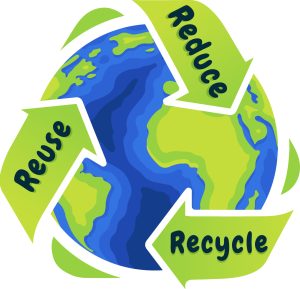Hi Everyone
Just wanted to update you on the latest challenge.
For those who have sponsored already, I thank you.
Emma Woodhouse is fundraising for Severn Hospice Limited | Give as you Live Donate
hashtag#WingWalk hashtag#Fearless hashtag#FundraisingForGood hashtag#SevernHospice hashtag#PushingLimits hashtag#severnhospice
If you have any questions, please get in touch.
Thank you.
 On March 31, 2025, England will implement the Simpler Recycling legislation, aiming to standardise waste management practices across businesses and non-domestic premises. This initiative seeks to enhance recycling rates and support the UKs transition towards a circular economy.
On March 31, 2025, England will implement the Simpler Recycling legislation, aiming to standardise waste management practices across businesses and non-domestic premises. This initiative seeks to enhance recycling rates and support the UKs transition towards a circular economy.
Key Requirements of the Legislation
Under the new rules, workplaces are mandated to separate their waste into distinct categories:
Additionally, workplaces generating garden waste are required to manage it following the waste hierarchy, ensuring its recycled or composted when environmentally beneficial.
Who Must Comply?
The legislation applies to any business or non-domestic premises producing waste similar in nature to household waste. This encompasses a wide range of establishments, including:
Its important to note that businesses with fewer than 10 full-time employees, termed micro-firms, have until March 31, 2027, to comply with these requirements.
Steps to Ensure Compliance
To align with the Simpler Recycling legislation, businesses should:
Consequences of Non-Compliance
Failure to adhere to these regulations may result in receiving a compliance notice from the Environment Agency. Such notices can be issued to waste producers, landlords, or facilities management companies responsible for waste presentation.
Support and Resources
The government offers guidance to assist workplaces and waste collectors in adapting to these changes. For detailed information and support, refer to the official guidance on Simpler Recycling.
By proactively implementing these measures, businesses can contribute significantly to environmental sustainability and ensure compliance with the forthcoming legislation.
Contact us for further information.
April marks Stress Awareness Month a time dedicated to raising awareness about the causes and effects of stress, and more importantly, how we can take steps to manage it in our daily lives. Whether it stems from work pressures, personal challenges, or simply the fast pace of modern life, stress can take a serious toll on our wellbeing if left unchecked.
In this blog, I will be looking at the small changes we can make that will have a big difference on both our mental and physical health, and some practical strategies we can all use to reduce its effects both at work and at home.
Contact us for further information.
**🌟 Adrenaline Alert! 🌟**
 It’s official—I’m taking on my next high-flying adventure: **wing walking** to raise money for the Severn Hospice, Apley Castle, Telford! 🛩️🎯
It’s official—I’m taking on my next high-flying adventure: **wing walking** to raise money for the Severn Hospice, Apley Castle, Telford! 🛩️🎯
After jumping out of planes and conquering half marathons for the QE Hospital, Birmingham, I’ve discovered something incredible: I thrive on pushing my limits. Fear? What’s that?! 😎
This time, I’m taking it to the skies (literally) to support a cause that’s close to my heart. Supporting Severn Hospice, Apley in their amazing work is my next challenge—and I’m ready to go all in.
If you’re up for the ride, cheer me on or donate to help make a real difference! 💪
Emma Woodhouse is fundraising for Severn Hospice Limited | Give as you Live Donate
hashtag#WingWalk hashtag#Fearless hashtag#FundraisingForGood hashtag#SevernHospice hashtag#PushingLimits hashtag#severnhospice
Thank you for listening 😊
 WHY LACK OF SAFETY INDUCTION AND TRAININGS LEADS TO ACCIDENTS
WHY LACK OF SAFETY INDUCTION AND TRAININGS LEADS TO ACCIDENTS
Lack of Hazard Awareness
Without proper induction, workers may be completely unaware of the specific hazards present in their work environment.
This includes dangers related to machinery, chemicals, working at heights, and other potential risks.
Insufficient Knowledge of Safe Work Practices
Training provides essential knowledge of safe operating procedures, the correct use of personal protective equipment (PPE), and emergency response protocols.
Without this knowledge, workers are more likely to make errors that lead to accidents.
Failure to Recognize and Respond to Risks
Effective training teaches workers how to recognize potential hazards and how to take appropriate action to mitigate those risks. Lack of training leaves workers ill-equipped to handle unexpected situations.
Increased Risk of Human Error
Human error is a major contributing factor to accidents. However, proper training can significantly reduce the likelihood of errors by providing workers with the necessary skills and knowledge to perform their tasks safely.
Inadequate Emergency Preparedness
Safety induction and training include instruction on emergency procedures, such as evacuation plans and first aid. Without this training, workers may panic or make poor decisions in an emergency, exacerbating the situation.
Poor Safety Culture
When safety training is lacking, it creates a general poor safety culture. When workers and management do not prioritize safety, accidents are far more likely.
Super video to watch – Click Here
Any questions, please contact us.